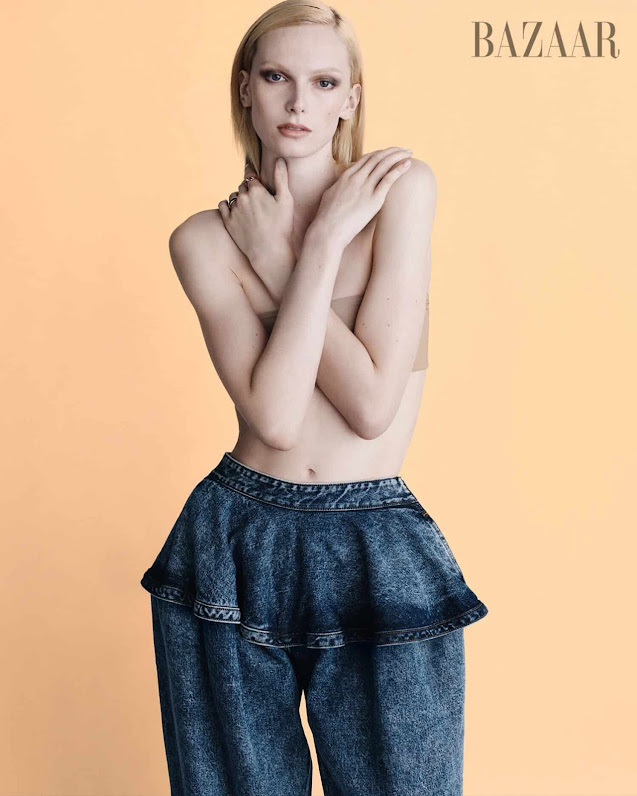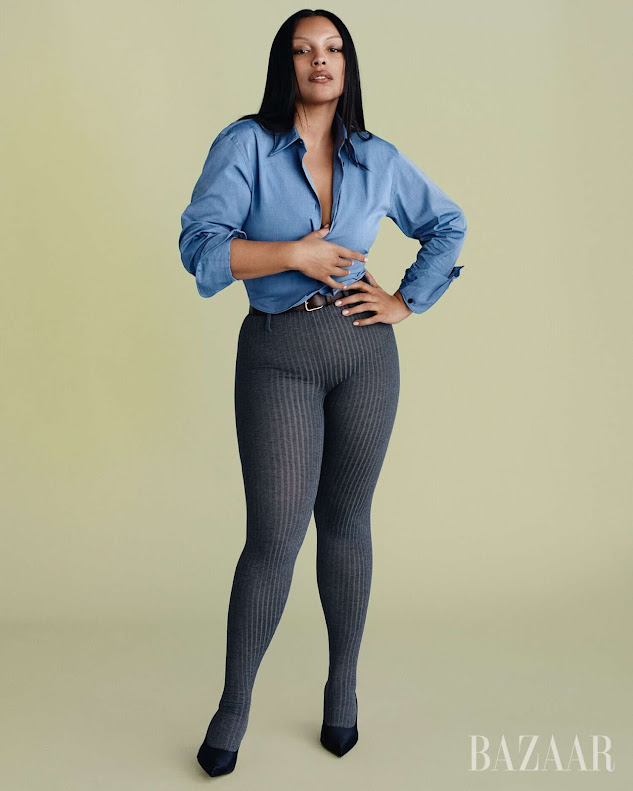The Evolution of Fashion Icons: Harper's Bazaar’s Super Cover Models, Donatella Versace’s New Role, and Giorgio Armani’s Timeless Influence
Fashion is more than just clothing—it is a powerful medium of self-expression, cultural reflection, and societal transformation. The industry is constantly evolving, with each era defining beauty, creativity, and influence in unique ways. Today, we witness groundbreaking changes that redefine the standards of fashion. Harper’s Bazaar is celebrating modern beauty with its latest "Now" issue, featuring a new generation of supermodels who are reshaping the industry. Meanwhile, Donatella Versace, after decades of leadership, is stepping into a new role, signaling a shift in the legendary Versace brand. At the same time, Giorgio Armani, a name synonymous with timeless elegance, continues to inspire through his classic designs and interior aesthetics.
These developments mark a pivotal moment in fashion history, where legacy meets transformation and the new generation embraces the future while paying homage to the past.
Harper’s Bazaar’s “Now” Issue: A Modern Tribute to Beauty and Diversity
Harper’s Bazaar has reimagined its iconic 1965 "Now" issue with a fresh perspective on beauty and fashion in 2024. This special edition features three trailblazing models—Alex Consani, Paloma Elsesser, and Anok Yai—who represent the changing face of the fashion world. Captured by the renowned photographer Ethan James Green, the cover is a testament to the industry's commitment to diversity, inclusivity, and redefining beauty standards.
Alex Consani: Breaking Barriers for Trans Representation
Alex Consani is not just a model; she is a symbol of resilience and authenticity. As a transgender woman making waves in high fashion, Consani understands the weight of her presence on a global stage. She emphasizes the importance of visibility and representation in an industry that has historically excluded trans individuals. "I think it’s important to just be seen as human beings, because that’s what we are," she stated in a recent interview.
Her success is not just a personal victory but a milestone for the LGBTQ+ community, showing that fashion is becoming more accepting of all identities. With brands increasingly prioritizing diverse representation, Consani’s journey signals a shift toward a more inclusive and progressive fashion landscape.
Paloma Elsesser: Redefining Beauty with Body Positivity
Paloma Elsesser has been at the forefront of the body positivity movement, challenging traditional notions of beauty that have long dominated the fashion industry. As a plus-size model, she has worked with major designers, proving that high fashion is not limited to one body type.
Her presence on the Harper’s Bazaar cover is a powerful statement, reinforcing the idea that beauty comes in all shapes and sizes. Elsesser continues to advocate for more size diversity in fashion, pushing for inclusivity beyond token representation. She believes that fashion should empower people rather than exclude them, and her work is paving the way for a more body-positive industry.
Anok Yai: Celebrating Dark-Skinned Beauty on the Global Stage
Anok Yai is one of the few dark-skinned models to achieve supermodel status in high fashion. Born in Sudan and raised in the U.S., she represents a shift in the industry's perception of beauty. For years, dark-skinned models were underrepresented on magazine covers and runways, but Yai’s success signals a long-overdue change.
Her journey from being discovered on Instagram to walking for luxury brands like Prada and Chanel is a testament to talent and perseverance. By featuring Yai on the cover, Harper’s Bazaar acknowledges the importance of racial diversity in fashion and the need to celebrate Black beauty on a global scale.
Donatella Versace: The End of an Era and the Beginning of a New Chapter
Donatella Versace has been the creative force behind the Versace brand for nearly three decades. After the tragic murder of her brother, Gianni Versace, in 1997, she stepped into the role of Chief Creative Officer, leading the fashion house through turbulent times. Many doubted whether she could uphold Gianni’s legacy, but Donatella not only preserved Versace’s signature aesthetic—bold prints, sensual silhouettes, and Italian glamour—but also reinvented it for the modern age.
Under her leadership, Versace experienced tremendous growth. She expanded the brand’s global influence, collaborated with major celebrities, and played a key role in making the famous "Jungle Dress" worn by Jennifer Lopez one of the most iconic fashion moments in history.
However, in 2018, Versace was acquired by Capri Holdings in a $2 billion deal, marking a turning point for the brand. Now, in 2024, Donatella is stepping down as Chief Creative Officer to take on a new position as Chief Brand Ambassador. This transition allows her to focus on the brand’s legacy, philanthropic efforts, and high-profile events rather than daily design operations.
She has also been appointed as the head of the 2025 Woolmark Prize jury, where she will mentor emerging designers and shape the next generation of fashion talent. While her departure from creative leadership marks the end of an era, her continued presence in the industry ensures that Versace’s influence remains strong.
Giorgio Armani: A Masterclass in Timeless Elegance
Giorgio Armani is a name that has become synonymous with refined luxury, understated elegance, and impeccable tailoring. At 89, Armani continues to be a dominant figure in the fashion industry, influencing both clothing design and interior aesthetics.
Recently, his historic Upper West Side apartment was featured in Elle Decor, giving fans a rare glimpse into his personal design philosophy. The 1929 apartment embodies the same principles that define his fashion collections: sophistication, harmony, and timeless appeal.
Elements of Armani’s Design Aesthetic
✅ Color Palette: Armani’s apartment features a soothing mix of blues, grays, and taupes. These neutral tones create a serene and sophisticated atmosphere, much like his clothing collections.
✅ Historical Touches: The space retains elements from the 1920s, such as intricate stained-glass windows and art deco influences, blending classic architecture with modern minimalism.
✅ Furniture and Décor: Every piece in Armani’s home reflects his signature style—elegant yet functional, luxurious yet unpretentious. From plush sofas to sleek tables, the apartment exudes an effortless charm that defines his approach to fashion.
Armani’s ability to translate his aesthetic across different mediums—fashion, home design, and even hospitality—proves that true style is not just about clothing but about a way of life. His influence extends beyond the runway, shaping the very essence of modern luxury.
Conclusion: The Future of Fashion is Here
The fashion industry is constantly evolving, but certain figures and moments define its trajectory. Harper’s Bazaar’s latest "Now" issue reflects a more inclusive and diverse definition of beauty, with models like Alex Consani, Paloma Elsesser, and Anok Yai leading the way. Donatella Versace’s transition from creative director to brand ambassador signals a shift in leadership while ensuring Versace’s legacy endures. Meanwhile, Giorgio Armani continues to inspire with his commitment to timeless elegance, proving that great design transcends trends.
These developments not only celebrate the past and present of fashion but also pave the way for a more inclusive, creative, and forward-thinking industry. As we move into the future, one thing remains clear: fashion will always be a powerful reflection of culture, identity, and artistic expression.



















0 Comments